General background
The Federal Democratic Republic of Nepal covers approximately 147,000 square kilometres of the southern slopes of the Himalaya Mountains. It sits between China’s Tibet on the north and India on the east, west, and south. The population of nearly 30 million includes 125 ethnic groups and 127 spoken languages.
Nepal has traditionally been ruled by a king, regarded as a reincarnation of Lord Vishnu, a Hindu deity. The Sugauli Treaty of 1816 defined the borders of Nepal, especially in relation to British India. The treaty also mandated that a British representative would serve in the Nepalese court, ensuring some level of British influence over the country. Rivalries among the noble Nepalese families resulted in several monarchs rising and falling in the early nineteenth century, with power eventually residing in Jang Bahadur as Prime Minister. Among Jan Bahadur’s modernization efforts was the codification of the country’s legal system. The 1,400 page Maluki Ain of 1854 consolidated the legal and criminal codes into a single body of law. In 1856, Jang Bahadur (eventually Jang Bahadur Rana) elevated his family status, essentially making the king a figure-head and establishing that the office of Prime Minister would be passed through hereditary succession, creating a dynastic dictatorship that lasted into the first half of twentieth century. The strength of the Rana rule relied heavily on the family’s goodwill with the British government, confirmed by the transformation of the British Resident to an envoy in 1919 and the 1923 Treaty of Perpetual Peace and Friendship. Nepal nevertheless never became a colony of British Empire and its independence remains intact till today.
The close relationship with Britain committed tens of thousands of Nepalese soldiers to the Allied forces in World War I and World War II, after which retired officers and other citizens began advocating for a multi party democratic government, but such movements were quickly silenced through arrests and exiles. Exiles in India established Nepalese political parties and worked with the Indian National Congress to secure India’s independence from Britain after World War II. By the time Padma Shamsher Rana became Prime Minister in 1945, public opinion coupled with the erosion of British influence in the region necessitated liberal reforms, which resulted in Nepal’s first Constitution in January 1948. This Constitution did little to curb the power of the Prime Minister because he could select all the members of the bicameral legislature and reject any measure they passed. Despite the weakness of the Constitution, conservative members of the Rana family viewed it as a dangerous precedent and forced the Prime Minister to resign before the Constitution could take effect. Several Nepalese political parties that had formed in exile consolidated to form the Nepali Congress Party; the Nepalese King Tribhuvan Bir Bikram Shah took refuge in India; and an armed revolution began November 11, 1950. A ceasefire was negotiated in January 1951 and in March of that year, a coalition consisting of the Ranas and the Nepali Congress Party reinstated the constitutional monarchy and established an Interim Constitution. This Constitution returned traditional powers to the king, established a judicial branch, and created a Bill of Rights. However, for the next several years, rather than hold elections, King Tribhuvan simply appointed new ministries when no consensus could be reached. The next king, Mahendra Bir Bikram Shah Dev, finally agreed to parliamentary elections in 1959, following substantial pressure from the populace. Just before the elections, King Mahendra presented the country with a new Constitution, which provided for a mostly-elected, bicameral legislative body. The King appointed half of the Lower House and retained extensive executive powers. The liberal policies of the new government alarmed the King, however, and he suspended the Constitution a year later, using interparty conflicts and violence within the country as an excuse to assume emergency powers. By the end of 1961, political parties were outlawed. In 1962, King Mahendra established the new Panchayat Constitution in which village assemblies were chosen on a local level from the elders. Under this system, democratic participation was greatly limited, political parties were banned, and the King retained all real power. In 1979, King Birendra held a referendum allowing citizens to vote for or against the partyless Panchayat system. The partyless Panchayat system won with a narrow margin, after which the King formed an eleven-member Constitution Reforms Commission. The Commission’s work resulted in the 1980 amendment that established direct elections to the National Panchayat (a national legislature), a Prime Minister from within that body and a Council of Ministers responsible to the National Panchayat rather than the king.
In 1990, large protest movement pushed King Birendra to adopt a new Constitution which maintained the constitutional monarchy, but curbed the King’s powers and created a multiparty system with a parliamentary form of government. It expanded personal freedoms, ended the ban on political parties, and established a Council of Ministers, led by a Prime Minister, to aid and advise the King. In 1996, a Communist Maoist guerrilla movement began in the countryside, which destabilized the political system. Gyanendra Bir Bikram Shah, the next brother of the King Birendra became king in 2001 in the midst of a maoist armed movement and immediately after the royal massacre that left the entire family of the King Birendra dead. He dismissed the government in 2002 for failing to contain the Maoist threat, reappointing a prime minister in June 2004. However, in 2005, King Gyanendra proclaimed a state of emergency, dismissed the government, suspended the Constitution, and set about suppressing the Maoist rebellion. After weeks of protests in 2006, the King was forced to reinstate the House of Representatives in April of that year. The elections marked the beginning of a ceasefire after ten years of guerrilla war that had claimed over 16,000 lives. The new House of Representatives, with a Maoist majority, abolished the monarchy less than a month after convening and adopted an Interim Constitution January 15, 2007.
Key Country Documents Index
- Constitution of Nepal (1948)
- Constitution of Nepal (1951)
- Constitution of Nepal (1959)
- Constitution of Nepal (1962)
- Constitution of Nepal (1990)
- Interim Constitution Preamble
- Interim Constitution Nepal (2007)
- Preliminary Draft of the Constitution of Nepal
- Draft Constitution of Nepal (2015)
- Constitution Bill of Nepal (2015)
- Constitution of Nepal (2015)
- More Nepal Documents
The Interim Constitution of 2007
The interim Constitution was a compromise document between the seven major political parties. It replaced the monarchy with a republic headed by a ceremonial President, created a Supreme Court, and provided for the election of a 601 member constituent assembly with added responsibility of acting as a parliament until the enactment of a new Constitution.
Executive Branch
Under the Interim Constitution, executive power is vested in a Council of Ministers headed by a Prime Minister. The Prime Minister and other members of the Council of Ministers are chosen through a ‘political consensus’ among the seven main political parties, failing which a leader commanding majority support in parliament is appointed as the Prime Minister. The Prime Minister and the Council of Ministers are collectively responsible to Parliament while individual ministers are responsible to both Parliament and the Prime Minister.
Legislative Branch
The legislative authority of the interim government, prior to the establishment of the CA rested in a 330 member Parliament. 209 of the members belonged to the seven political parties who were party to the peace agreement in 2006: 73 members belonged to the Communist Party of Nepal (Maoist); and 48 members were nominated by consensus from organizations, communities, regions, and groups. The term of the Parliament expired upon the creation of the CA which took over the legislative powers of the government. Of the 425 members of the Assembly, 409 are elected by a direct vote, but 16 members of the Assembly must be nominated to represent minority groups and women. Bills are passed by a majority vote. The CA was to have a two year term, but this term was later extended by additional two years.
Judicial Branch
The court system of Nepal is made up of a Supreme Court, Appellate Courts, District Courts, and special courts established by law. The Supreme Court is the highest court with the power to inspect, supervise, and give directives to the lower courts. It has original and appellate jurisdiction over cases involving the constitution and federal laws. It may declare laws unconstitutional and enforce fundamental rights. The Supreme Court is composed of 15 members, including a Chief Justice. The Prime Minster appoints the Chief Justice on the recommendation of the Constitutional Council, and the Chief Justice in turn appoints the other Justices on the recommendation of the Judicial Council. The Justices in Supreme Court retire at the age of 65 and judges in lower courts at the age of 63. A supreme court judge may resign or be impeached by a two-thirds vote of the legislature.
Constitutional developments after 2008
The Maoists won approximately 30% of the vote in the CA election of 2008. The major issues of contention involved the fate of 19,000 former Maoist militants, whether to adopt an executive presidency, and how to structure the new federal system. The Maoist wanted a federal structure with multiple identities, giving priority rights to dominant ethnic groups. The Nepali Congress and the CPN-UML argued that such a structure would undermine the democratic rights of other ethnic groups. A high level commission was established to reconcile different proposals for the structure of the provinces, recommending ten provinces. The party leaders then agreed on eleven provinces but backtracked under pressure from the Indigenous People and Madhesi groups. Supporters of the eleven province model believe it would ensure multi-ethnic states and leave the current district structure in place.However, recurrent political crisis, leadership changes, deadlocks, and constant amendments to the Interim Constitution itself continued to plague the constitution building process. Leaders of the major political parties fought among themselves and often conducted negotiations outside the CA. Political parties were accused of hijacking the process as CA procedures were increasingly circumvented and major decisions taken outside the assembly, and no party had the necessary two-thirds vote required to pass a new constitution.
In June 2010, Prime Minister Madhav Kumar Nepal agreed to resign in exchange for a deal with the Maoists to extend the deadline for finalising a new constitution by another year when the CA missed its two-year deadline. However, political turmoil and competition continued to delay the process. The CA was unable to elect a new Prime Minister until months later, in February 2011, after 17 unsuccessful attempts to reach a political consensus. On 29 May 2011, a day after the expiration of the extended deadline, the Nepalese government extended the deadline by another three months to August 29 and then to November 2011.
Unfortunately, none of these extensions resulted in a new constitution and another deadline was set for May 27, 2012. With the Nepalese beginning to protest over lack of progress on the process, the Supreme Court ruled that the CA could not be extended again if it did not meet the May 2012 deadline. The CA was unable to meet this deadline, and in line with the Supreme Court decision, was automatically disbanded with lapse of its last extended tenure on 27 May 2012.
The dissolution of the CA caused a political deadlock. Maoist Prime Minister Baburam Bhattarai tried unsuccessfully to call new CA elections for November 2012 but was forced to step aside in March 2013. An interim government was set up under the leadership of the Chief Justice of the Supreme Court, Khil Raj Regm. Elections for a new Constituent Assembly were held in November 19, 2013. The centrist parties Nepali Congress and the Communist Party of Nepal won 105 and 91of the 240 seats, respectively, while the Maoists won only 26.The second Constituent Assembly held its first meeting January 22, 2014. Debates about the composition of the permanent constitution continue.
Constitutional Challenges
| Issues | Challenges |
|---|---|
|
|
Structure of Government under the Interim Constitution
Timeline
| 1816 |
The Sugauli Treaty of 1816 defines the borders of Nepal and mandates that a British representative will serve in the Nepalese court |
| 1846 |
Rana family takes control of the government from the hereditary kings |
| 21 December 1923 | Nepal–Britain Treaty of 1923 defines the international status of Nepal as an independent and a sovereign country |
| February 1951 | Popular rebellion leads to restoration of the power of the monarchy |
| 1959 | New constitution instates multiparty legislature |
| 1960 |
King suspends Parliament, constitution, and party politics. |
| 1962 | 1959 Constitution replaced with Panchayat Constitution |
| 1980 | Popular referendum leads to amendments creating democratic reforms |
| 1990 | Mass revolts force King to adopt a new democratic constitution |
| February 1996 | Maoist rebellion begins |
| 1 June 2001 | King, Queen, and other members of the Royal family killed by suicidal Crown Prince |
| 22 May 2002 |
King suspends Parliament and constitution and state of emergency declared to fight the Maoist rebels |
| 24 April 2006 | King reinstates Parliament after violent popular protests; Parliament strips King of power and declares peace with Maoists |
| 15 January 2007 | Interim Constitution goes into effect |
| May 2008 | Nepal becomes a republic; first President elected; Maoists form coalition government |
| May 2009 | Maoist Prime Minister resigns over conflict with President |
| May 2010 | Deadline for constitutional draft extended by a year |
| February 2011 | New Prime Minister elected after 17 months political stalemate |
| 29 May 2011 | Draft deadline extended by three months August ; Prime Minister agrees to step down as part of the deal |
| August 2011 | CA deadline again extended to November |
| November 2011 | CA seeks new extension which is granted till 25 May 2012: Supreme Court also rules that no further extension of deadline will be allowed beyond May 2012 |
| 25 May 2012 | Supreme Court rejects new request for extending CA mandate and gives body 48 hours to complete work |
| 27 May 2012 | CA misses deadline for delivering Constitution and is dissolved |
| 13 June 2013 | New CA elections announced for November 22 ,2013 |
| March 2013 | New CA elections announced for November 22, 2013 |
| 19 November 2013 | Elections for a new Constituent Assembly are held |
| 22 January 2014 | First meeting of the new Constituent Assembly convened |
| 21 March 2014 | The Second Constituent Assembly adopts its Rules of Procedures |
Expert Interviews
Constitution Building Videos with Leaders and Experts from Nepal
Bibliography
- The Library of Congress. A Country Study: Nepal. Web.http://lcweb2.loc.gov/frd/cs/nptoc.html.
- BBC News. Nepal’s King Declares Emergency. Web. 1 February 2005. http://news.bbc.co.uk/2/hi/south_asia/4224855.stm.
- King Gyanendra’s Proclamation, April 24, 2006. Available at http://www.satp.org/satporgtp/countries/nepal/document/papers/King_Gyanendra%20Proclamation_Apr24.htm.
- Sumnima Udas. Nepal King Stripped of Most Powers. CNN World.Web. 18 May 2006. http://edition.cnn.com/2006/WORLD/asiapcf/05/18/nepal.king/.
- BBC News. Nepal Votes to Abolish Monarchy. Web. 28 May 2008. news.bbc.co.uk/2/hi/south_asia/7424302.stm.
- Kiran Chapagain & Jim Yardley.Nepal Avoids Crisis in Deal to Extend Parliament. The New York Times. 28 May 2010. Available at http://www.nytimes.com/2010/05/29/world/asia/29nepal.html?_r=0.
- BBC News. Nepal: JhalanathKhanal Elected New Prime Minister. Web. 3 February 2011. http://www.bbc.com/news/world-south-asia-12358985.
- Election Guide.Federal Democratic Republic of Nepal: Election for SambidhanSabha (Constituent Assembly). Web. 10 April 2008. http://www.electionguide.org/elections/id/1499/.
- BBC News. Nepal Profile.Web. Last updated 22 January 2014. http://www.bbc.com/news/world-south-asia-12499391.
- Gopal Sharma. Nepal on Alert as Clock Ticks Towards Constitution Deadline. Reuters. Web. 27 May 2012. http://www.reuters.com/article/2012/05/27/us-nepal-politics-constitution-idUSBRE84Q01B20120527.
- NDTV.Chief Justice Khil Raj Regmi to be Sworn-In as Nepal Prime Minister. Web. 14 March 2013. http://www.ndtv.com/article/world/chief-justice-khil-raj-regmi-to-be-sworn-in-as-nepal-prime-minister-342201.
- Gardiner Harris. In Fractured Nepal, Plans for National Elections Provide a Series of Subplots. The New York Times. 6 November 2013. Available at http://www.nytimes.com/2013/11/07/world/asia/in-fractured-nepal-plans-for-national-elections-provide-a-series-of-subplots.html.
- Gardiner Harris. Election Results in Nepal Signal a Political Right Turn. The New York Times. 26 November 2013.
- Ross Adkin. Nepal Tries Again to Write a Constitution. The Diplomat.Web. 12 March 2014. http://thediplomat.com/2014/03/nepal-tries-again-to-write-a-constitution/.
- Damakant Jayshi. Nepal Parliament Resumes Following All-Party Deal.The Hindu.Web. 11 June 2014. http://www.thehindu.com/news/international/south-asia/nepal-parliament-resumes-following-allparty-deal/article6105191.ece.
| Branch | Hierarchy | Appointment | Powers | Removal |
|---|

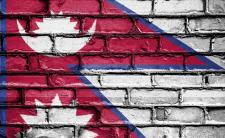
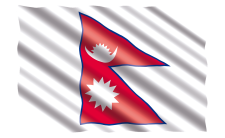
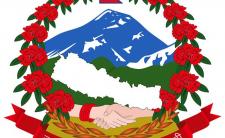
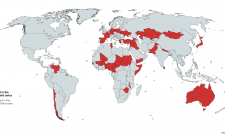
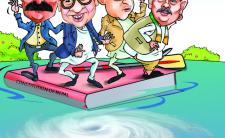
Share this article